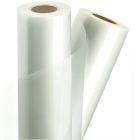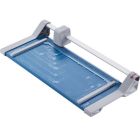A Crash Course in Lamination
Have you ever been curious about lamination and wondered what it can do for you? If so, continue reading so you can get a crash course in this popular document finishing method.
1.) What items can be laminated? Virtually any document can be laminated. On the personal level, you can laminate your prized mementos, such as a marriage certificate, high school or college diploma, children’s artwork, concert ticket stubs, and newspaper clippings. In the professional sphere, menus, blueprints, legal papers, visual aides, and ID badges can all benefit from lamination. It can also be used to create learning materials (such as flash cards), point-of-purchase displays, and emergency information, such as an evacuation plan.
2.) Why should you laminate? The main reasons to laminate is to protect and preserve what’s important. Papers and photographs are fragile objects and can be easily damaged by too much handling, as well as spills, rips, and exposure to the elements. For example, a menu can benefit from lamination because it will be handled by many diners over its lifetime. If you don’t laminate the menu, you’ll have to replace it pretty quickly because it will be torn, stained, etc. Also, lamination can be used to enhance certain items, especially photographs. The film will really make the colors in the item stand out, so your documents will look fantastic.
3.) What’s the different between hot (thermal) and cold (pressure sensitive) lamination? Here’s how they differ:
- Hot (thermal): During this process, the machine will melt the film’s adhesive, more or less encapsulating your document in a sheath of plastic. Also, the adhesive will penetrate the pores of your item, bonding the document and plastic permanently together. Almost all laminators have hot settings, but heat isn’t good for thermally sensitive items. Which leads us to…
- Cold (pressure sensitive): Cold lamination uses pressure to secure your item in the plastic. No heat is used because the adhesive is already sticky and doesn’t need to be heated up. This type of lamination is good for documents that could be damaged by heat including photographs and anything printed with a wax- or water-based ink, such as color copies and ink-jet printouts. It can also be used for laminating mounting boards.
4.) Should you get a pouch or a roll laminator? There are some major differences between the two main types of laminators. Let’s take a look at them:
- Pouch laminators: These machines are ideal for companies or individuals that do small runs. This is because the machines can only laminate one item at a time and you have to feed them into the device individually. Pouch laminators can be easy to use and affordable, and they’re good for smaller documents such as I.D. badges and things printed on letter-sized paper.
- Roll laminators: If you need to laminate anything that’s wider than about 13 inches, you’ll need a roll laminator. Ditto if you need to quickly laminate a lot of documents. Roll lamination is a cheaper preservation method simply because of the volume of documents you can preserve. There is also a wider selection of films you can use. However, both methods are great – just pick the one that’s right for you.
5.) What brand names should you look for? GBC undoubtedly makes some of the best laminators money can buy. They manufacture both pouch and roll machines, and they also produce all the supplies needed to use these devices. Fellowes is another great name, as are Tamerica, James Burns, Lamitek, and Akiles.
Lamination is something you simply must do if you want to preserve, protect, and enhance your important documents. Now that you know all about it, get a laminator and some supplies today so you can begin laminating!
If you need to purchase a Pouch or Roll Laminator, you should visit MyBinding.com. They have one of the best selections of laminators on the Internet and they also carry a wide assortment of Paper Shredders. Plus, you’ll get free shipping on every order over $75.00. Be sure to check it out today!








